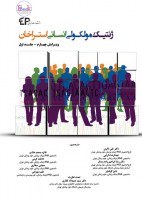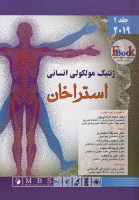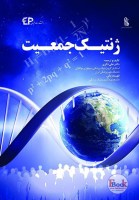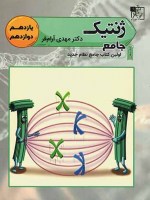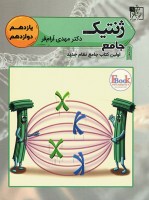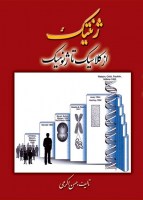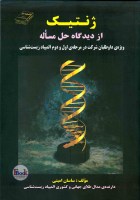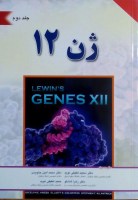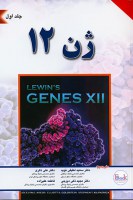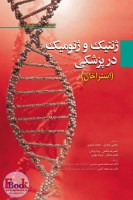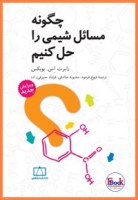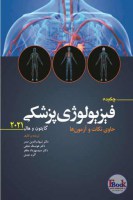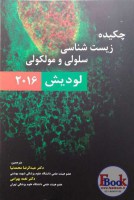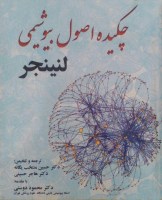دسته بندی
ژنتیک پزشکی در یک نگاه (اندیشه رفیع)
کتاب ژنتیک پزشکی یکی از کتاب های مناسب در زمینه ژنتیک پزشکی و انسانی بوده که به نحو شایسته ای توسط گروهی از بهترین مترجمین ترجمه شده است. ژنتیک پزشکی به خصوص ژنتیک انسانی نقش ویژه ای در بسیاری از بیماری ها و تشخیصات قبل و بعد از تولد دارد. ترجمه این کتاب بصورت روان و ساده بوده که همین موضوع باعث درک بهتر مطالب می باشد. در پایان کتاب تعدادی سوالات به همراه پاسخنامه با عنوان خودآزمایی موارد بالینی گنجانده شده است.
مباحث کتاب در 240 صفحه به ترتیب زیر طبقه بندی شده است:
بخش اول)بیولوژی سلولی، مولکولی و تکوینی
__فصل1:مقدمه و بیولوژی پایه
__فصل2:سلول
__فصل3:کروموزوم ها
__فصل4:ساختمان DNA
__فصل5:همانند سازی DNA
__فصل6:ساختار RNA
__فصل7:ساختار RNA پیام رسان(mRNA)
__فصل8:سنتز پروتئین
__فصل9:چرخه ی سلولی
__فصل10:گامتوژنز
__فصل11:رویان شناسی
__فصل12:قالب بدن
__فصل13:تمایز جنسی
بخش دوم)ژنتیک پزشکی
__فصل14:جایگاه ژنتیک در پزشکی
__فصل15:قوانین مندل
__فصل16:توارث اتوزومی غالب(اصول)
__فصل17:توارث اتوزومی غالب(نمونه های کلینیکی)
__فصل18:وراثت اتوزومی مغلوب(اصول)
__فصل19:توارث مغلوب اتوزومی(نمونه های بالینی)
__فصل20:جنبه های غالبیت
__فصل21:نقش پذیری ژنومی و جهش دینامیک
__فصل22:وراثت وابسته به X
__فصل23:دیگر بیماری های مرتبط با جنس
__فصل24:آنیوپلوئیدی اتوزومی
__فصل25:آنیوپلوئیدی های کروموزوم جنسی
__فصل26:ناهنجاری های ساختاری کروموزوم
__فصل27:ناهنجاری های ساختاری کروموزوم(نمونه های بالینی)
__فصل28:ناهنجاری های مادرزادی(علل پیش جنینی، جنینی و ذاتی)
__فصل29:ناهنجاری های مادرزادی ناشی از مرحله ی جنینی
__فصل30:اصول بیماری های چند عاملی
__فصل31:بیماری های چند عاملی در کودکان
__فصل32:اختلالات رایج در بالغین
__فصل33:مطالعات روی دوقلوها
__فصل34:پلی مورفیسم طبیعی
__فصل35:فراوانی الل ها
__فصل36:پیوستگی ژنتیکی
__فصل37:نقشه برداری ژنی
__فصل38:موتاژن ها و ترمیم DNA
__فصل39:جهش ها
__فصل40:بیولوژی مولکولی سرطان
__فصل41:سرطان های خانوادگی
__فصل42:ایمونوژنتیک
__فصل43:اختلالات ژنتیک سیستم ایمنی
__فصل44:ژنتیک بیوشیمیایی(قسمت اول)
__فصل45: ژنتیک بیوشیمیایی(قسمت دوم)
بخش سوم)کاربرد بالینی ژنتیک
__فصل46:نگاه کلی به کاربرد های بالینی ژنتیک
__فصل47:رسم شجره نامه
__فصل48:ارزیابی خطر
__فصل49:دیسمورفولوژی
__فصل50:آنالیز کروم
__فصل51:تشخیص بیوشیمیایی
__فصل52:مشاوره ی ژنتیک تولیدمثلی
__فصل53:نمونه گیری قبل از تولد
__فصل54:کاربرد بالینی پیوستگی
__فصل55:توالی یابی DNA
__فصل56:ساترن بلات
__فصل57:واکنش زنجیره ای پلیمراز
__فصل58:پروفایلینگ DNA
__فصل59:مدیریت بیماری ژنتیکی
__فصل60:اجتناب و پیشگیری از بیماری
__فصل61:مسائل اخلاقی و اجتماعی در ژنتیک پزشکی
+خودآزمایی مورد بالینی:سئوالات
+خودآزمایی مورد بالینی:پاسخ ها
+واژه نامه
ژنتیک پایه تا پیشرفته (برای فردا)
کتاب ژنتیک پایه تا پیشرفته نوشته دکتر سعیده قیاسوند است. که در انتشارات برای فردا به چاپ رسیده است.
این کتاب 458 صفحه ای که از سال 1397 تا کنون یک بار چاپ شده است.
این کتاب در 19 مبحث اصلی زیر، ژنتیک را مورد بررسی قرار میدهد؛
فصل 1: ژنتیک و خاستگاه آن
فصل 2: تعیین جنسیت
فصل 3: سیتوژنیک و ناهنجاری های کروموزمی
فصل 4: چرخه ی سلولی و گامتوژنز در انسان
فصل 5: الگوهای وراثتی و شجره نامه
فصل 6: پیوستگی،نوترکیبی و کراسینگ اور
فصل 7: ژنتیک جمعیت
فصل 8: ماده وراثتی
فصل 9: همانند سازی DNA
فصل 10: رونویسی و پردازش RNA
فصل 11: ترجمه و پروتئین سازی
فصل 12: تنظیم بیان ژن
فصل 13: جهش و ترمیم
فصل 14: ایمنوژنتیک
فصل 15: مهندسی ژنتیک
فصل 16: ژنتیک پزشکی (تنظیم چرخه سلول و سرطان)
فصل 17: ژنتیک پزشکی (ژنتیک صفات و بیماری های چند عاملی و تک ژنی)
فصل 18: ژنتیک پزشکی (ژن درمانی)
فصل 19: بیوتکنولوژی
ژنتیک و ژنومیک در پزشکی استراخان (اطمینان)
نتیک و ژنومیک در پزشکی استراخان
نویسنده : تام استراخان
مترجم : آرش سلمانی نژاد، زهرا گل چهره، زهرا حسن پور، یوسف جعفری ابرغان، مریم عابدی، سپیده احمدی
ویراستاران علمی: آرش سلمانی نژاد(دانشجوی دکتری ژنتیک پزشکی) و زهرا گل چهره(دانشجوی دکتری ژنتیک پزشکی)
انتشارات : اطمینان
سال انتشار : 1398
نوبت چاپ : اول
زبان کتاب : فارسي
نوع چاپ : تک رنگ
جلد کتاب : شومیز
قطع : وزیری
تعداد صفحات : 711 صفحه
موضوع اصلی : زیست شناسی-ژنتیک
ژنتیک مولکولی واتسون 2014 زبان اصلی
About the Author
James D. Watson is Chancellor Emeritus at Cold Spring Harbor Laboratory, where he was previously its Director from 1968 to 1993, President from 1994 to 2003, and Chancellor from 2003 to 2007. He spent his undergraduate years at the University of Chicago and received his Ph.D. in 1950 from Indiana University. Between 1950 and 1953, he did postdoctoral research in Copenhagen and Cambridge, England. While at Cambridge, he began the collaboration that resulted in the elucidation of the double-helical structure of DNA in 1953. (For this discovery, Watson, Francis Crick, and Maurice Wilkins were awarded the Nobel Prize in 1962.) Later in 1953, he went to the California Institute of Technology. He moved to Harvard in 1955, where he taught and did research on RNA synthesis and protein synthesis until 1976. He was the first Director of the National Center for Genome Research of the National Institutes of Health from 1989 to 1992. Dr. Watson was sole author of the first, second, and third editions of Molecular Biology of the Gene, and a co-author of the fourth, fifth and sixth editions. These were published in 1965, 1970, 1976, 1987, 2003, and 2007, respectively. He is also a co-author of two other textbooks: Molecular Biology of the Cell and Recombinant DNA, as well as author of the celebrated 1968 memoir, The Double Helix, which in 2012 was listed by the Library Of Congress as one of the 88 books that shaped America.________________________________________
Tania A. Baker is the Head of the Department and Whitehead Professor of Biology at the Massachusetts Institute of Technology, and an Investigator of the Howard Hughes Medical Institute. She received a B.S. in biochemistry from the University of Wisconsin, Madison, and a Ph.D. in biochemistry from Stanford University in 1988. Her graduate research was carried out in the laboratory of Professor Arthur Kornberg and focused on mechanisms of initiation of DNA replication. She did postdoctoral research in the laboratory of Dr. Kiyoshi Mizuuchi at the National Institutes of Health, studying the mechanism and regulation of DNA transposition. Her current research explores mechanisms and regulation of genetic recombination, enzyme-catalyzed protein unfolding, and ATP-dependent protein degradation. Professor Baker received the 2001 Eli Lilly Research Award from the American Society of Microbiology and the 2000 MIT School of Science Teaching Prize for Undergraduate Education and is a fellow of the American Academy of Arts and Sciences since 2004 and was elected to the National Academy of Sciences in 2007. She is co-author (with Arthur Kornberg) of the book DNA Replication, Second Edition.
________________________________________
Stephen P. Bell is a Professor of Biology at the Massachusetts Institute of Technology and an Investigator of the Howard Hughes Medical Institute. He received B.A. degrees from the Department of Biochemistry, Molecular Biology, and Cell Biology and the Integrated Sciences Program at Northwestern University and a Ph.D. in biochemistry at the University of California, Berkeley in 1991. His graduate research was carried out in the laboratory of Dr. Robert Tjian and focused on eukaryotic transcription. He did postdoctoral research in the laboratory of Dr. Bruce Stillman at Cold Spring Harbor Laboratory, working on the initiation of eukaryotic DNA replication. His current research focuses on the mechanisms controlling the duplication of eukaryotic chromosomes. Professor Bell received the 2001 ASBMB–Schering Plough Scientific Achievement Award, the 1998 Everett Moore Baker Memorial Award for Excellence in Undergraduate Teaching at MIT and the 2006 MIT School of Science Teaching Award.
________________________________________
Alexander A.F. Gann is the Lita Annenberg Hazen Dean and Professor in the Watson School of Biological Sciences at Cold Spring Harbor Laboratory. He is also a Senior Editor at Cold Spring Harbor Laboratory Press. He received his B.Sc in microbiology from University College London and a Ph.D. in molecular biology from The University of Edinburgh in 1989. His graduate research was carried out in the laboratory of Noreen Murray and focused on DNA recognition by restriction enzymes. He did postdoctoral research in the laboratory of Mark Ptashne at Harvard, working on transcriptional regulation, and that of Jeremy Brockes at the Ludwig Institute of Cancer Research at University College London, where he worked on newt limb regeneration. He was a Lecturer at Lancaster University, U.K., from 1996 to 1999, before moving to Cold Spring Harbor Laboratory. He is co-author (with Mark Ptashne) of the book Genes & Signals (2002), and co-editor (with Jan Witkowski) of The Annotated & Illustrated Double Helix.
________________________________________
Michael Levine is a Professor of Genetics, Genomics and Development at the University of California, Berkeley, and is also Co-Director of the Center for Integrative Genomics. He received his B.A. from the Department of Genetics at University of California, Berkeley, and his Ph.D. with Alan Garen in the Department of Molecular Biophysics and Biochemistry from Yale University in 1981. As a postdoctoral fellow with Walter Gehring and Gerry Rubin from 1982-1984, he studied the molecular genetics of Drosophila development. Professor Levine's research group currently studies the gene networks responsible for the gastrulation of the Drosophila and Ciona (sea squirt) embryos. He holds the F. Williams Chair in Genetics and Development at University of California, Berkeley. He was awarded the Monsanto Prize in Molecular Biology from the National Academy of Sciences in 1996, and was elected to the American Academy of Arts and Sciences in 1996 and the National Academy of Sciences in 1998.
________________________________________
Richard M. Losick is the Maria Moors Cabot Professor of Biology, a Harvard College Professor, and a Howard Hughes Medical Institute Professor in the Faculty of Arts & Sciences at Harvard University. He received his A.B. in chemistry at Princeton University and his Ph.D. in biochemistry at the Massachusetts Institute of Technology. Upon completion of his graduate work, Professor Losick was named a Junior Fellow of the Harvard Society of Fellows when he began his studies on RNA polymerase and the regulation of gene transcription in bacteria. Professor Losick is a past Chairman of the Departments of Cellular and Developmental Biology and Molecular and Cellular Biology at Harvard University. He received the Camille and Henry Dreyfuss Teacher-Scholar Award, is a member of the National Academy of Sciences, a Fellow of the American Academy of Arts and Sciences, a Fellow of the American Association for the Advancement of Science, a Fellow of the American Academy of Microbiology, a member of the American Philosophical Society, and a former Visiting Scholar of the Phi Beta Kappa Society. Professor Losick is the 2007 winner of the Selman A. Waksman Award of the National Academy of Sciences, a 2009 winner of the Canada Gairdner Award, and a 2012 winner of the Louisa Gross Horwitz Prize for Biology or Biochemistry of Columbia University.
ژنتیک مولکولی انسانی استراخان 2019 جلد اول (اندیشه رفیع)
بخش اول: اساس DNA،کروموزوم ها،سلول ها،تکوین و وراثت
فصل 1_اصول پایه ای ساختار اسید نوکلئیک و بیان ژن
فصل 2_اصول بنیادی سلول ها و کروموزوم ها
فصل 3_اساس بر همکنش های سلول_سلول و زیست شناسی سیستماتیک ایمنی
فصل 4_جنبه های تکوین اولیه پستانداران،تمایز سلول و سلول بنیادی
فصل 5_الگو های وراثتی
بخش دوم: درک ژنوم
فصل 6_تکنولوژی های DNA هسته ای: تکثیر DNA، هیبریداسیون اسید نوکلئیک و توالی یابی DNA
فصل 7_تحلیل و بررسی ساختار و بیان ژن ها و ژنوم ها
فصل 8_اساس دستکاری ژنتیکی سلول های پستانداران
فصل 9_پرده برداری از معماری و عملکرد های ژنوم انسانی
فصل 10_تنظیم ژنی و اپی ژنوم
بخش سوم: واریانت های ژنتیکی بین افراد و بین گونه ها
فصل 11_مروری بر تنوع ژنتیکی انسان
ژنتیک از دیدگاه حل مساله
کتاب ژنتیک از دیدگاه حل مساله نوشته ساسان امینی است. که در انتشارات اندیشه سرا به چاپ رسیده است.
این کتاب 276 صفحه ای که از سال 1382 تا کنون سی و دو بار تجدید چاپ شده است.
این کتاب از منابع المپیاد زیست شناسی می باشد و در 8 مبحث اصلی زیر، ژنتیک را مورد بررسی قرار میدهد؛
فصل 1: مقدمه ای بر احتمالات
فصل 2: تقسیم سلولی
فصل 3: مندلیسم
فصل 4:تعمیم مندلیسم
فصل 5: جنسیت
فصل 6: تغییرات کروموزومی
فصل 7: استثنائاتی بر مندلیسم
فصل 8: ژنتیک جمعیت
چگونه مسایل شیمی را حل کنیم (فاطمی)
سال ها پيش انتشارات فاطمي ترجمه ويراست هفتم كتاب “چگونه مسائل شيمي را حل كنيم“ را منتشر كرد كه با استقبال چشمگير علاقه مندان مواجه شد. كتابي كه هم اكنون پيش روي شماست جديدترين ويرايش اين كتاب است كه به تازگي منتشر شده است. در ويراست هشتم اين كتاب روشهايي ارائه شدهاند تا دانشآموزان در حل مسائل مهارت بيشتري پيدا كنند. در اين ويراست ضرايب تبديل و روش حذف واحدها و رسيدن به واحد مناسب با جزئيات مطرح شده است. در مورد ساختارهاي لوييس هيبريد شدن و مدل VSEPR روش جديدي براي پيش بيني ساختار هندسي مولكولي ارائه شده است. بحثهاي مربوط به ترموديناميك و خنثي شدن و تيتر كردن و استفاده از پتانسيلهاي كاهش شرح و بسط داده شده و تعديل شده و روزآمد شده است. مطالعه اين كتاب را به دانش آموزان دوره متوسطه و داورطلبان شركت در المپياد شيمي و دانشجويان سالهاي اول رشته شيمي توصيه ميكنيم.
فصل۱: چگونه مسئله حل کنیم
فصل۲: واحدهای اندازه گیری
فصل۳: وزن اتمی، مقدار و مول
فصل۴: روابط جرم-مقدار در فرمول های شیمیایی
فصل۵: روابط مولی در واکنش های شیمیایی(I. استوکیومتری)
فصل۶: روابط مولی در واکنش های شیمیایی(II. مخلوط ها)
فصل۷: قوانین گازها
فصل۸: گرماشیمی
فصل۹: نظریه کوانتومی و ساختار اتم ها
فصل۱۰: ساختار مولکول ها
فصل۱۱: غلظت محلول ها
فصل۱۲: خواص محلول ها
فصل۱۳: سینتیک
فصل۱۴: تعادل شیمیایی و ثابت های تعادل
فصل۱۵:تعادل اسید و باز I
فصل۱۶: اسیدها و بازها II
فصل۱۷: حاصل ضربهای انحلال پذیری و یون های کمپلکس
فصل۱۸: ترمودینامیک
فصل۱۹: فرایندهای اکسایش-کاهش
پیوست
پاسخ مسائل












_200x200.jpg)
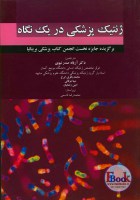
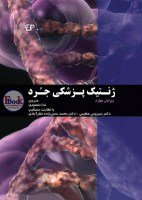
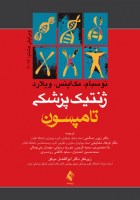
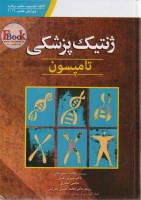
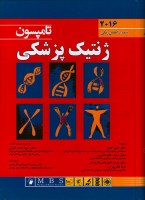
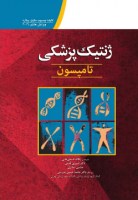
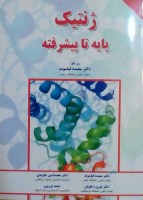
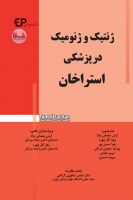
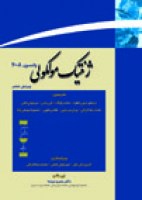

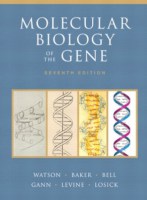
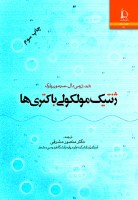
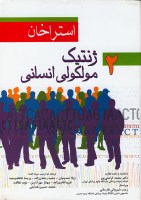
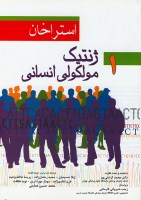
_200x200.jpg)
